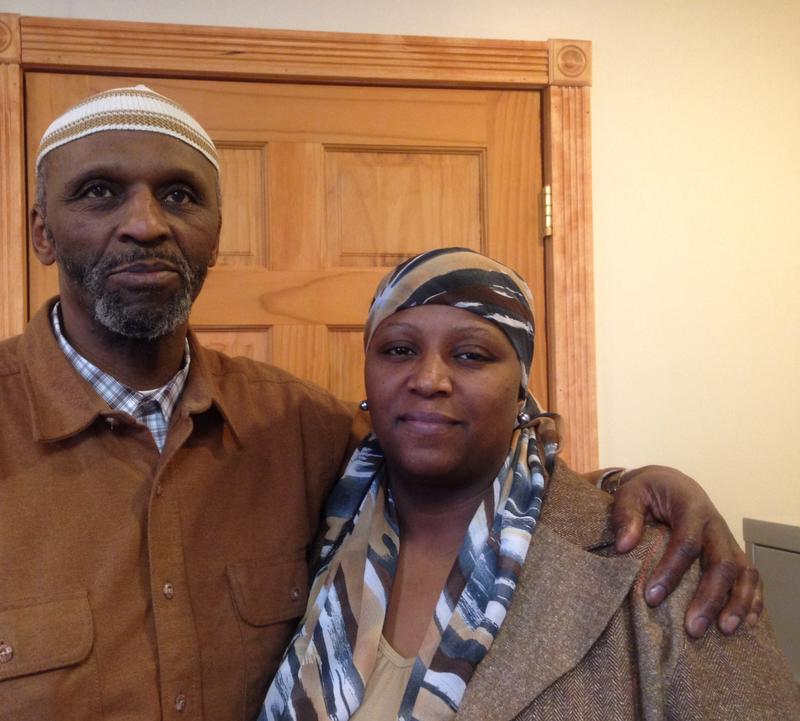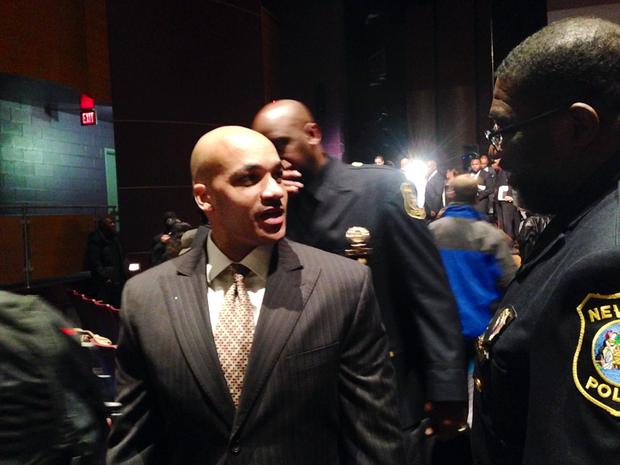
During a heavy snow storm last winter, at 11:30 on a Tuesday morning, a man wearing a hoodie and a mask walked toward a parked car on Springfield Avenue in Newark’s Central Ward and started shooting at the five people inside.
“The guy stayed there for about 15, 20 seconds. Just shooting,” Abdul Akbar Muhammed, the Imam at a nearby mosque, recalled. His son was in the driver’s seat and he died with his legs halfway outside of the car. Snow started piling up on his legs, and police told the family they couldn't move the body because it was a crime scene.
“He stayed like that a couple hours,” Muhammad said. “My wife, she got mad about it. She really didn't like it.”
At the time, police said they thought it was a targeted shooting. Bullets struck four of the people in the car and two died. Abdul Akbar Muhammad Jr. was 36 years old. Shante Spivey, from East Orange, was 28.
Most Deaths Gun-Related
Data obtained by New Jersey Public Radio shows 81 of the 93 homicides last year were gun-related. All but two of the victims were black or Hispanic, and six were minors.
WNYC's map of homicides in Newark shows murders were evenly spread across most of the city, except for the industrial areas near the port and airport, and a couple of middle-class enclaves where no killings took place.
Three people were killed on the edge of Newark’s downtown area, and one in the largely Portuguese neighborhood called the Ironbound.
Newark Police Director Eugene Venable said about 75 percent of those killed are deliberate targets over drug territory. “We’re talking about heroin and cocaine,” Venable said. “Turf battles.”
Who Is Getting Killed in Newark and How? (Click on each point for details.)
Venable said that in less than 3 percent of the homicides an unintended target is killed. Domestic violence deaths and murders that are the result of a dispute make up most of the others.
Efforts to Curb Killings
Since coming into office seven months ago, Mayor Ras Baraka has reassigned desk officers to street duty as part of his crime-fighting strategy. He also created special narcotics and firearms units to go into areas where drugs are being sold — because those are the places people are carrying weapons. And the mayor opened the first new police precinct in the city in decades to try to increase police visibility.
Venable, the police director, says having a police presence helps prevent crimes like robberies and aggravated assaults because they are “crimes of opportunity.” But he said it does not prevent turf-related killings.
“Homicides are within. It’s because of an evil heart and it’s kind of hard for the police to stop that. So what you do is just be in that area where you think it’s going to happen, and the presence itself will deter it at that moment,” he said. “But if they’re going to kill, they’re still going to kill.”
Newark police have been focusing their efforts on what has historically been the most dangerous time: 7 p.m. to 3 a.m. But last year close to 40 percent of the homicides occurred in broad daylight.
Venable says residents are reacting to the police presence, and crime patterns are changing.
“Now they see that we’re out there on Fridays and Saturdays, and they’re moving to Sundays," he said. "So it just causes us to have to respond and make adjustments. And we’ll do that.”
The Newark Police Department would not provide the total number of people shot in the city last year, but at a community meeting in the Ironbound last month Newark Police Chief Anthony Campos said it was between 300 and 400 people.
“I’m talking about shooting hits where somebody winds up with a hole in them. I’m not talking about where somebody shoots and they’re just bad shots,” Campos said. “Thankfully, most people that are shot do not die.”
Depending on the time of day, there can be as few as 40 police officers — a minimum of eight per precinct — on the ground responding to calls in New Jersey’s largest city. Mayor Baraka plans to hire 150 more cops this year.
“But even if we hired all the police officers that we need, we need to do other things to stop people from thinking they should be involved in crime and violence,” Baraka said.
The mayor said it will take time to change the culture.
“People believe they can get away with this kind of stuff," he said. "So we have to make more arrests, we have to do more in those neighborhoods to make sure that the people who do these things know that we’re not going to tolerate it here in the city of Newark.”
Close to half of the people who killed someone in Newark last year have not yet been caught. According to Chief Campos, no arrests have been made in 46 of the 93 homicides.
And the city’s no-snitching culture makes murders difficult to solve, police have said.
The person who killed Akbar Muhammad and Shante Spivey has not been apprehended more than a year later. The two were shot on a busy street across from a Home Depot and in front of a crowd outside two restaurants. Surveillance footage caught the shooting. Rasheed Salaam, the owner of Nubian Flavor, ran out when he heard the shots fired. He grabbed one of the victims from the car, threw him over his shoulders, and drove him to the hospital.
“One of the customers informed me I had bumped into the guy and told him, ‘pardon me,’ as I was running down,” Salaam said. “I had no idea that that was the guy who just shot five people.”
Molly Mantus contributed reporting for this article and the data news map.

